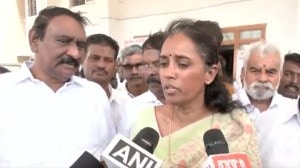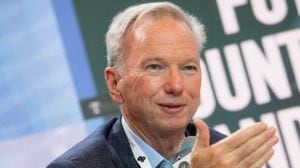Budget’s baby steps towards reform
Finance Minister P. Chidambaram’s Budget 2006 — tabled in an environment of various pressures from political allies, and following...

Finance Minister P. Chidambaram’s Budget 2006 — tabled in an environment of various pressures from political allies, and following Budget 2005 which had already seen significant tax reform — was not expected to usher in radical changes. Within these constraints the finance minister did not move away from the agenda of economic reform. He has taken baby steps on a number of issues. There is a lot more, however, that could have been done, even given the political constraints imposed by a fractious UPA alliance.
The UPA agenda of flagship schemes had created fears of large deficits and increases in spending. The FM displayed fiscal prudence in his expenditure allocations. While scary amounts of Rs 14,300 crore have been allocated to the National Rural Employment Guarantee initiative, and Rs 10,041 to the Sarva Siksha Abhiyan, without any assessment being presented about the achievements or lessons from the previous year’s spending, the total deficit numbers have not gone out of control, and the FM has reiterated his intention to stick to the Fiscal Responsibility and Budgetary Management targets, despite the pressure from the Planning Commission and the Left to increase spending on central schemes.
IN addition there are other steps, albeit small, which indicate that India is still on the road to reform. Small but significant changes towards further liberalisation of the capital account, both inflows and outflows, the removal of a large number of exemptions for customs and excise, the reduction in customs duties, the cut in excise on cars and the announcement that India will have a goods and services tax (GST) by April 2010 are positive signals to the world. But the date set for the GST is distant and something closer would have put the Indian economy on the 10 per cent growth path even earlier.
Fortunately, the FM did not buckle under the pressure from the Left to introduce a number of regressive taxes, such as a luxury goods tax, wealth tax, inheritance tax, and so on. The only concession made to the Left was that instead of reducing the excise duty on all cars, the minister reduced excise duties only on non-luxury cars. The removal of the plethora of exemptions on customs and excise, which have been the bane of the Indian tax structure, is a major initiative towards tax rationalisation. The inclusion of long-term fixed deposits is also a welcome move that is a step towards giving equal tax treatment to different kinds of savings instruments. Some other desirable tax reforms which could have been undertaken, were unfortunately not. Instead of removing the FBT, the FM only rationalised it. Instead of removing the STT, he raised it. He continued with the cash withdrawal tax, although there was an indication given that it will go some time later.
The weakness in the budget lies in it having failed to envisage a clear blueprint for infrastructure. While the minister has allocated money for new capacity building in the power sector by inviting bids for five ultra mega projects, their implementation needs to be made quicker. The UPA’s road projects have been in slowdown mode. The restructuring of the NHAI will cause further delays in a project that had been thundering along under the NDA. The rural electrification programme has impressive targets, but the key to its success will be the unbundling of generation, transmission and distribution of electricity. An empowered committee of chief ministers and power ministers had been set up to initiate electricity reform. Hopefully this group will now not postpone meetings on power reform, as it had been doing so far, and get down to the serious business at hand.
The UPA government has given enormous emphasis to agriculture since it came to power. But budget after budget has shown that this was mere lip service. This budget too glosses over the issue, and fails to address the urgent question of crop diversification. A fund of Rs 150 crore has been allocated for a central institute of horticulture to be set up in Nagaland. Agricultural growth has slowed down because of the government’s pro-cereal policy and the answer lies in shifting to high-value crops, like fruit and vegetables. Until the subsidies on crops like wheat and rice go, there is little scope for serious crop diversification in Indian agriculture. The FM has appealed to the House for a consensus on the issue. It is time, in fact, for the country to debate it.






- 01
- 02
- 03
- 04
- 05

























